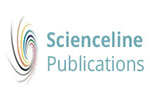(2024) Evaluation of Salmonella Enteritidis Isolated from Layer Hens and Murine Fecal Pellets in Poultry Farms of Libya. Journal of World's Poultry Research. pp. 211-218. ISSN 2322455X
|
Text
JWPR14(2) 211-218, 2024.pdf - Published Version Download (646kB) |
Abstract
The rodents play a significant role in the transmission of Salmonella between farms and regions. The present study aimed to compare the virulence of Salmonella enteritidis isolated from fecal samples of laying hens and murine within the same poultry house but different regions in Libya using Vivo-quantitative measurement of invasiveness (chicken intestinal loop model). A total of 540 cloacal swabs from laying hens (Hy-line brown chickens) aged 36 weeks and 200 batches of murine fecal pellets were collected from the same poultry house at Gaser Bin Gisher and Furnag regions in Libya. The samples were passed on pre-enrichment broth (Buffered Peptone Water) and enrichment broths (Rappaport Vassiliadis, Selenite broth, and tetrathionate), then the samples were cultured onto Xylose Lysine Deoxycholate agar, brilliant green agar, Salmonella Shigella agar, and Hektoen enteric agar. Single colonies were selected and stained by gram stain and tested biochemically using analytical profile index (API) 20 tests. Salmonella enteritidis was isolated from all the collected samples. The invasion of Salmonella enteritidis isolated from laying hens and murine feces was significantly higher in the anterior inoculation position compared to the posterior position of jejunum in both regions. The account of Salmonella enteritidis isolated from laying feces of hens and murine at Gaser Bengasher region was significantly higher than that isolated from the AlFurnge region. In the present study, the rodents act only as mechanical transmitters without affecting Salmonella invasiveness capacity. Furthermore, the invasion of Salmonella enteritidis depends on the inoculation position in the jejunum. Moreover, the invasiveness variation of Salmonella enteritidis isolated from the Gaser Bengasher and AlFurnge regions could be attributed to the presence of different Salmonella strains in the studied area. Salmonella enteritidis isolated from poultry and murine in the current study was sensitive to gentamicin, ciprofloxacin, and enrofloxacin and resistant to doxycycline, chloramphenicol, sulfafurazol, and ampicillin. © Open Access: This article is licensed under a Creative Commons Attribution 4.0 International License, which permits use, sharing, adaptation, distribution and reproduction in any medium or format, as long as you give appropriate credit to the original author(s) and the source, provide a link to the Creative Commons licence, and indicate if changes were made. The images or other third party material in this article are included in the article’s Creative Commons licence, unless indicated otherwise in a credit line to the material. If material is not included in the article’s Creative Commons licence and your intended use is not permitted by statutory regulation or exceeds the permitted use, you will need to obtain permission directly from the copyright holder. To view a copy of this licence, visit https://creativecommons.org/licenses/by/4.0/.
| Item Type: | Article |
|---|---|
| Keywords: | Invasiveness; Layer chicken; Murine infestation; Salmonella enteritidis |
| Subjects: | S Agriculture > SF Animal culture |
| Divisions: | Journal of World's Poultry Research (JWPR) |
| Page Range: | pp. 211-218 |
| Journal or Publication Title: | Journal of World's Poultry Research |
| Journal Index: | Scopus |
| Volume: | 14 |
| Number: | 2 |
| Publisher: | Scienceline Publication |
| Identification Number: | https://doi.org/10.36380/jwpr.2024.22 |
| ISSN: | 2322455X |
| Depositing User: | Dr. Daryoush Babazadeh |
| URI: | http://eprints.science-line.com/id/eprint/1159 |
Actions (login required)
 |
View Item |


 Dimensions
Dimensions Dimensions
Dimensions